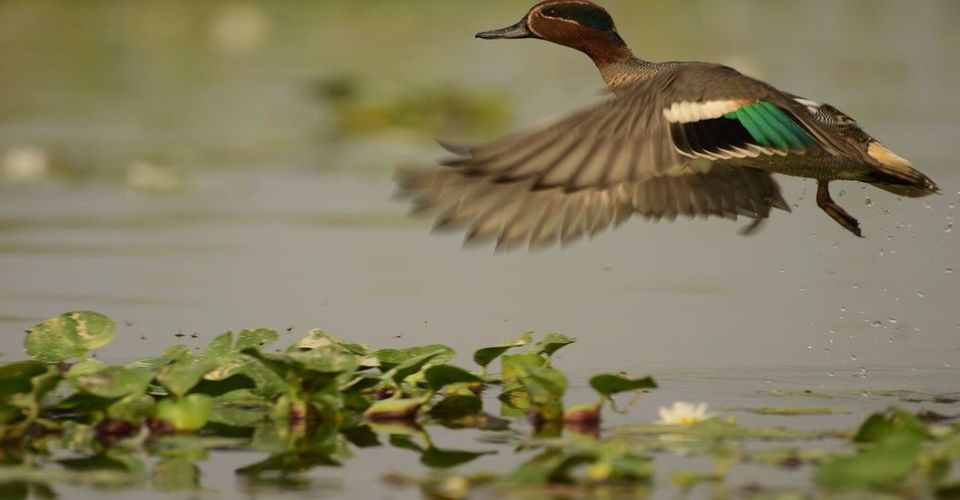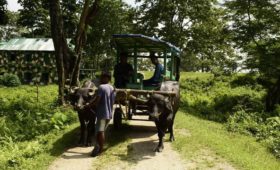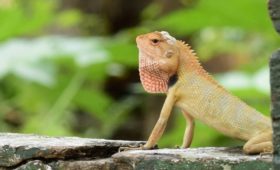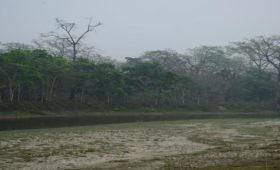To know about accommodation options, how to reach Gajoldoba, the best time to visit and other details, please visit – Birds of Gajoldoba Wetlands
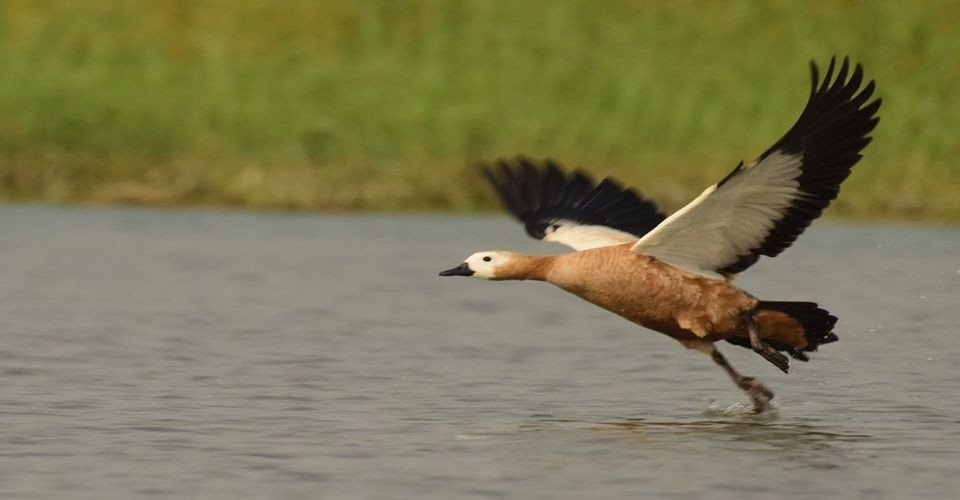 Ruddy Shelduck take-off
Ruddy Shelduck take-off
Birding Zones of Gajoldoba
For birding Gajoldoba can be divided into two broad zones – a) The Dam Area b) The Main River
Dam Area – The dam area can be called the backwaters of river Teesta. The area is connected to the mainstream through a small strip of waterbody. The area has a dense growth of ‘Hogla’ – common watergrass in this part of the world. Waders like – Ruddy Shelduck, Red-Crested Pochards, Coots, Mallards, Common Teals are mostly found in this area.
The Main River – The main river has mud silts. Waders like – Bar-headed Goose, Common Shelduck, Northern Lapwing, Merganser are mostly found in this area.
Tapas – My Boatman
I had already contacted Tapas – my boatman – for all my trips to Gajoldoba. I was accompanied by my wife – my companion for almost all birding tours of Gajoldoba. In the company of the shrill cacophony call of Ruddy Shelduck, we waded in a country boat through the waters and marshes.
Tapas had spotted Thick-knee a week before. It was late afternoon and the sky was cloudy. We decided to swiftly cruise through the dam area and move into the main river in search of- Northern Lapwing and Thick-knee.
The Dam Area
As Tapas was steering the boat through the shallow waters of the dam area, a flock of Common Teal was gently wading in the waters. The Eurasian Teal breeds in temperate Eurasia and migrates southwards to spend the winter in warmer regions. It is highly gregarious outside the breeding season, and large noisy flocks are commonly seen in wet areas.
Most of the waders and other migrants arrived at Gajoldoba a week before and has not yet acclimatized with the presence of photographers. To frame these winged beauties in early winters is toil and takes a lot of patience.
A pair of Rudddyshel duck was basking under the sun. As we tried to get near, it flew past us with an ‘aang-aang’ call.
The Main River
As we move to the main river, on our left is the Baikunthapur Forest. The river has changed its course and moved towards the Baikunthapur Forest. In the evening herd of elephants come out to feed on ‘Hogla’ grass. Locals have grown paddy on the banks of the river. It the time of harvest elephants are frequent visitors to this place.
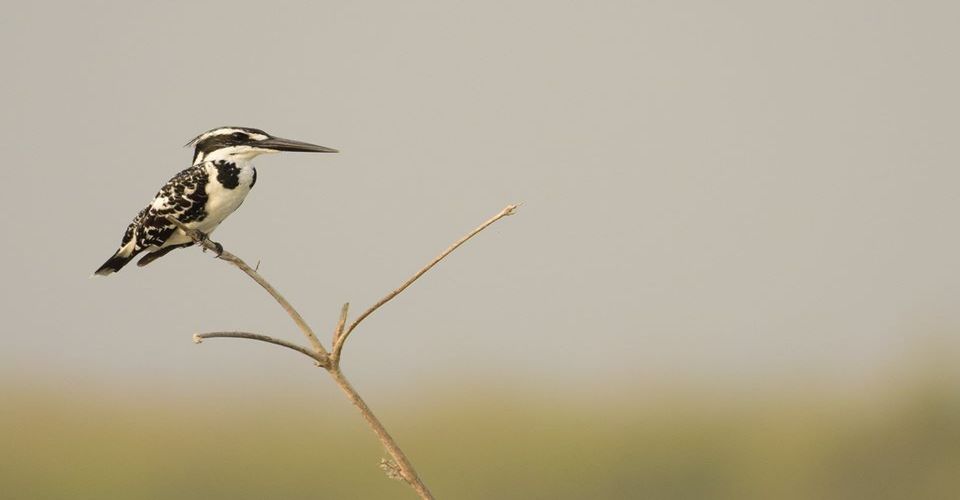 Pied Kingfisher
Pied Kingfisher
The Early Waders
Kingfisher always allures me with its radiant colours, its manoeuvres and its keen eyesight and skill to catch its prey. Oblivious about our presence, a Pied Kingfisher was perched on protruding branch. In the search for the last meal of the day before it flies back to its abode at Baikunthapur forest.
I took out my binoculars to scan the mudflats. A flock of Sandpipers and Wagtails were probing the soil in search of insects and other invertebrates.
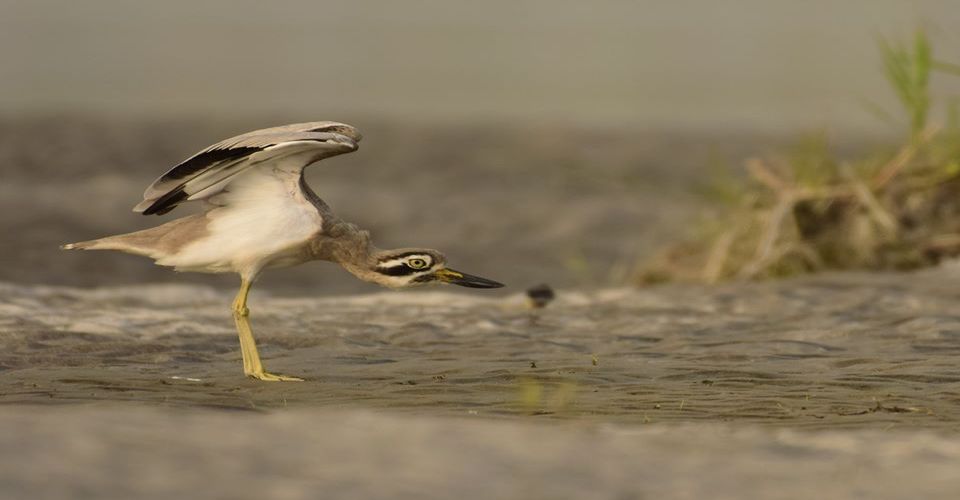 Thick-knee
Thick-knee
Our frantic search for Thick-knee yield results. A pair was standing still in one the sand beaches camouflaged with the habitat. Tapas carefully and with utmost precision, anchored the boat against the mudflat. These nocturnal birds hardly move during the day. Other than an occasional short run to run away from our presence.
Tapas steered the boat towards a flock Northern Lapwing – arguably the most beautiful and vibrant bird of Lapwing family. The water level is abysmally low at places and it was literally impossible to steer the boat. A Grey Heron, a pair of Ruddy Shelduck was sharing the habitat with nearly 200 Northern Lapwings. A marvellous sight to behold.
The light dipped suddenly and dark clouds were hovering above. We decided to return. Last 2 hours was fantastic and eventful. I firm believer of the aphorism – ‘Gajodoba is Magical’.
At the time of return, we visited ‘Bhorer Alo’ – a new tourist hub. The property is maintained by Govt. of West Bengal and is absolutely superb in all respects.
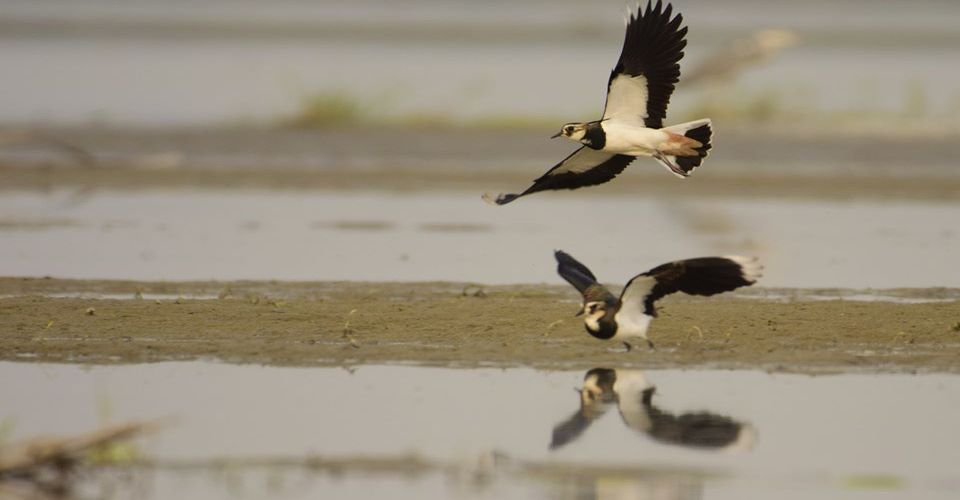 Northern Lapwing
Northern Lapwing
Birds List:
Ruddy Shelduck, Common Teal, Sandpiper, Pied Kingfisher, Thick-knee, Northern Lapwing, Grey Heron, River Lapwing, Red-Wattled Lapwing and Gadwall.

